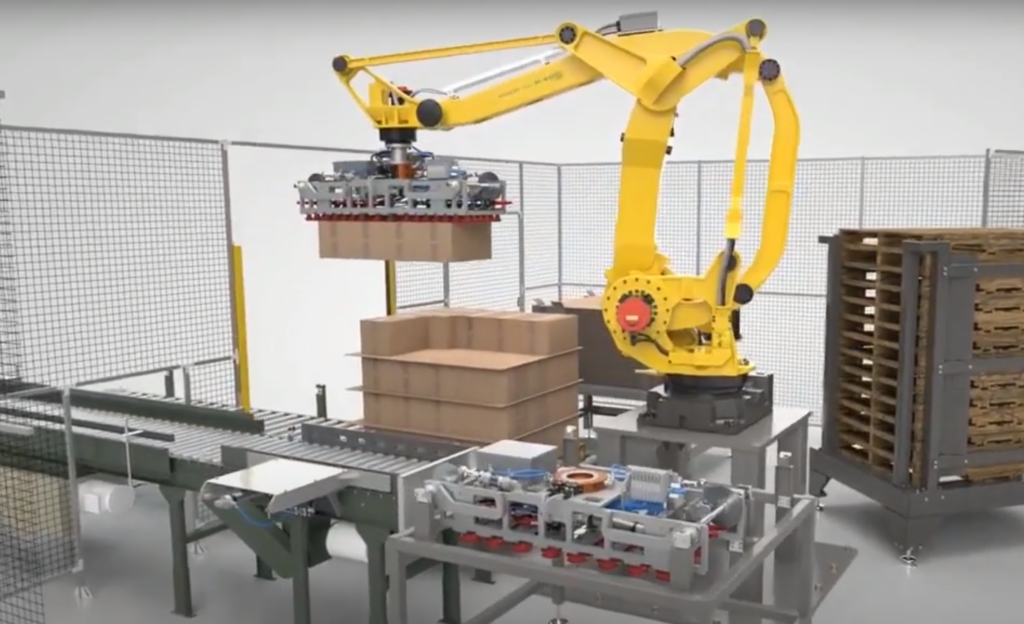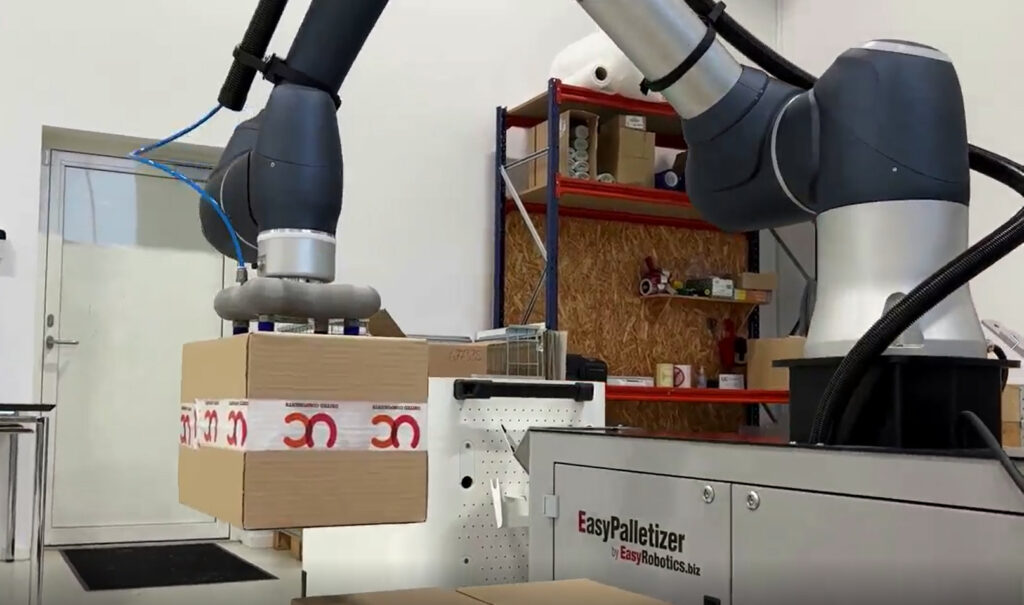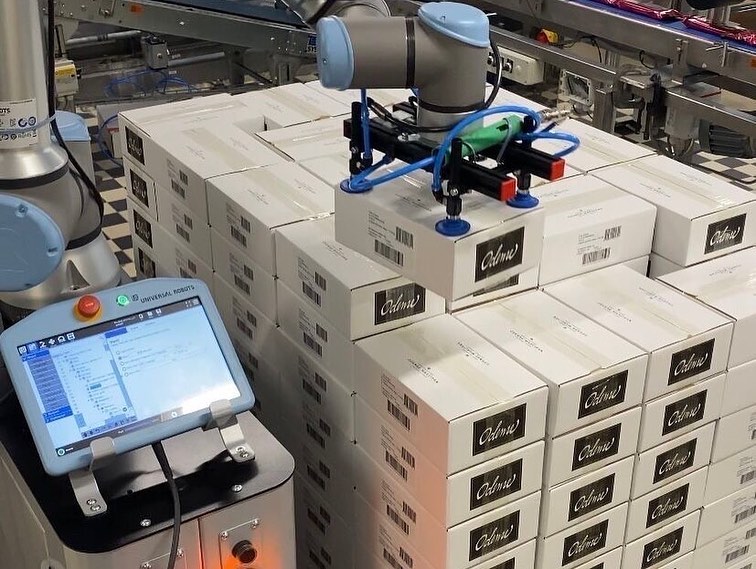Robotic palletizing
Robotic palletizing is the process of arranging products on a pallet for storage and transportation using a robotic arm. In this process, the robot arm picks and places products from a conveyor onto the pallet in a specific pattern. The use of robots for palletizing has become increasingly popular in recent years due to the many benefits they offer over manual palletizing methods.

Robot palletizing in modern warehouse logistics
Robotic palletizing is a promising direction in the development of warehouse logistics, maintenance of conveyor production. Modern industries are interested in reducing costs, so they seek to replace the manual labor of workers. Connecting robots to palletizing and packaging finished products will increase the competitiveness of any product due to the final price.
Advantages of Robotic Palletizing
- Increased Efficiency: Robotic palletizing systems are capable of working at a much faster pace than manual palletizing methods, resulting in increased production efficiency. The robots are programmed to pick and place products in a specific pattern, which can be done quickly and accurately.
- Improved Accuracy: Robotic palletizing systems are equipped with sensors and programming that allow them to accurately pick and place products onto the pallet. This helps to reduce product damage and ensures that pallets are properly loaded and secure for transportation.
- Reduced Labor Costs: One of the biggest advantages of robotic palletizing is the reduction in labor costs. Robots can work around the clock without the need for breaks, resulting in a significant reduction in labor costs compared to manual palletizing methods.
- Increased Safety: Robotic palletizing systems help to reduce the risk of injury to human workers by performing dangerous and repetitive tasks. This can help to improve the overall safety of the workplace.
- Customization: Robotic palletizing systems can be programmed to arrange products in specific patterns based on customer requirements. This allows for greater customization of the palletizing process, which can be especially important for companies that have unique palletizing requirements.

Disadvantages of Robotic Palletizing
- High Initial Cost: One of the main disadvantages of robotic palletizing is the high initial cost of the system. The cost of purchasing and installing a robotic palletizing system can be substantial, making it a less attractive option for some companies.
- Maintenance Costs: Robotic palletizing systems require regular maintenance and repairs, which can add to the overall cost of the system. It is important to budget for these costs when considering a robotic palletizing system.
- Limited Flexibility: Robotic palletizing systems are designed to perform specific tasks and can be limited in their ability to handle different products and palletizing patterns. This can be a disadvantage for companies that require greater flexibility in their palletizing process.
How to choose between manual and automated palletizing?
Robotic palletizing offers many benefits over manual palletizing methods, including increased efficiency, improved accuracy, reduced labor costs, increased safety, and customization. However, it is important to consider the high initial cost and maintenance costs of the system, as well as the limited flexibility of some systems, when deciding if a robotic palletizing system is the right choice for your company.
Collaborative palletizing robot as a best solution for SME`s
Smaller productions, such as small and medium-sized enterprises (SMEs), face many challenges when it comes to palletizing their products. The process can be time-consuming, labor-intensive, and prone to errors, all of which can impact productivity and profitability. To address these challenges, many SMEs are turning to collaborative palletizing robots, also known as cobots, as a solution.
Cobots are designed to work alongside human workers in a shared workspace, making them an ideal solution for smaller productions that still rely on manual labor. Unlike traditional industrial robots, cobots are designed to be easy to use, safe to work around, and flexible enough to adapt to changing production environments. Here are some of the benefits that make cobots the best solution for smaller productions:

Advantages for SME`s
- Precise stacking of items.
- High speed of work without stopping for “rest”.
- Decreased risk of injury for product laying operations.
- Flexibility and adaptability of the lifting module.
- No risk of stopping production – robots work 24 hours a day.
- Operational reconfiguration of the automated plant for changing production tasks.
- Quick return on investment – the estimated period of return of money does not exceed two years.
- Full automation of the process – the absence of a human factor at all stages of palletizing.
- Remote monitoring with the possibility of electronic analysis of performance.
- Processing of products of any kind – in size, volume, weight – up to 25 kg.
Collaborative palletizing robots are an excellent solution for smaller productions that still rely on manual labor. They offer many benefits over manual palletizing methods, including increased efficiency, improved safety, ease of use, scalability, and improved quality. While there are some disadvantages to consider, such as the lower speed then industrial palletizing solutions and limited weight capability of some systems, cobots are still the best solution for many SMEs looking to improve their palletizing process.